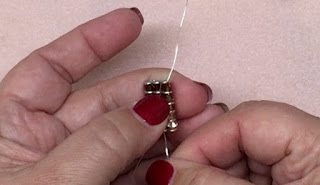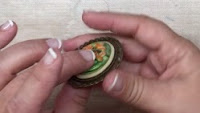I've been making glass beads since 2005 when I took my first beadmaking class at a bead store in my local area. I was hooked! Below are some of my beads:



Handmade Glass Beads: Some glass beads are made by a lampwork bead artist. These beads are made one at a time using a mixed fuel torch of propane and oxygen. The glass is wound onto a stainless steel wire called a mandrel that has been coated with bead release. The size of the stringing hole is dependent on the size of the mandrel. They can range from1/16th of an inch up to 2" or more. The beadmaker uses various tools, molds, gravity and color glass to decorate the bead. Once it is finished to the beadmaker's liking, it is placed in a preheated kiln for annealing. Annealing is a process of controlling the rated of cooling which gives the glass strength and durability. After the glass has come to room temperature, the beadmaker then removes the bead from the mandrel and then cleans any remaining bead release from the bead hole. This is usually done with a bead reamer or a diamond grinding bit with a rotary tool. At this point the beads can be sold or made into jewelry.
Handmade Italian Glasss Beads: Some beads are made by glass blowers and are hollow, decorated with color or fine metals such as silver or gold.
Pressed Beads: Another way of manufacturing beads is again by pressing them with a machine. Glass is heated to a molten state and then fed into a machine press with a die that stamps out the bead shape.
Glass beads can also be made by press molds. These are usually made in mass production using a machine or mold where fine glass frit are poured in, then heated to melt the glass. While the beads are still hot, holes are created by plunging a tool into the center of the molten glass.
Glass Seed Beads: Glass seed beads are made by trapping a bubble in the molten glass and pulled into a long stringer. The trapped bubble creates the hole in the center of the stringer. Once cool, these are cut into small beads by a machine.
Here is a video produced by Corning Museum of Glass that shows the processes I wrote about above.
When purchasing glass beads for your project(s), it is important to keep in mind just how durable the glass beads need to be, are making an item for yourself or to sell. If your project is for yourself you have a lot more leeway knowing that if the beads break you can repair it. But if you are selling your finished piece you may want to only use annealed beads.





























































